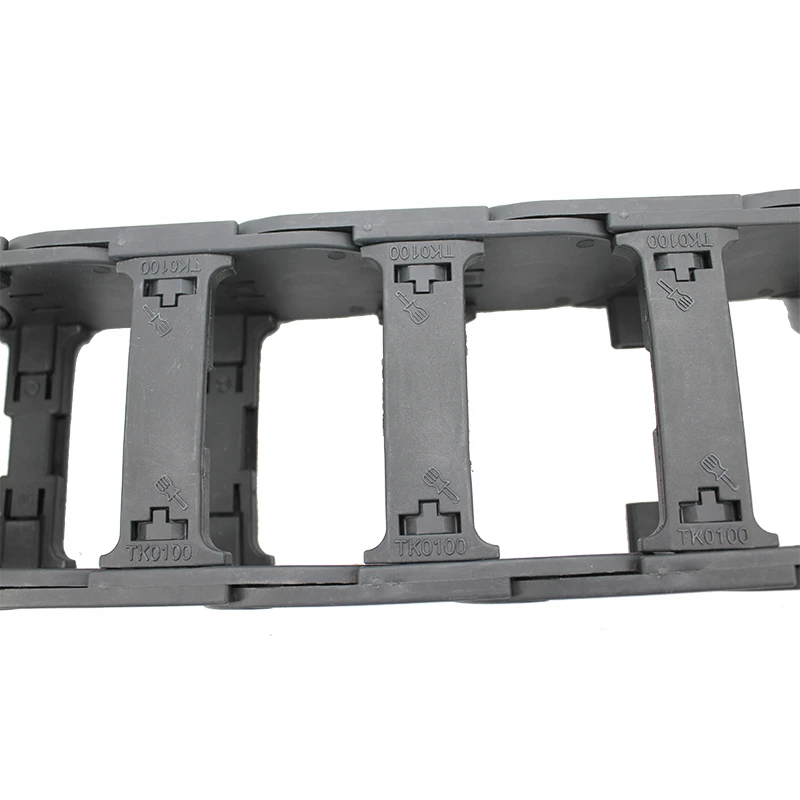closed drag chain
Understanding Closed Drag Chains A Comprehensive Overview
Closed drag chains, often referred to as cable carriers or energy chains, play a crucial role in various industrial applications. These systems facilitate the smooth movement of cables and hoses in machinery, ensuring the functionality and safety of moving parts. This article explores the essential aspects of closed drag chains, including their design, applications, benefits, and considerations for effective use.
What are Closed Drag Chains?
Closed drag chains are designed to house, protect, and guide electrical cables, hydraulic hoses, and pneumatic tubes. Unlike open chains, which expose the cables to environmental hazards, closed drag chains provide a protective enclosure. This design minimizes wear and tear, reduces the risk of tangling, and protects against dirt, debris, and other external elements that can cause damage.
Design Features
The design of closed drag chains typically includes several key features
1. Materials These chains are commonly made from durable plastic, steel, or aluminum, depending on the required strength and application. Plastics are often chosen for their lightweight properties and resistance to corrosion, while metals provide additional strength for heavy-duty applications.
2. Link Geometry The links of closed drag chains can vary in shape and size, accommodating different cable diameters and lengths. Many designs feature curved links, which facilitate smooth bending and movement, enhancing the overall performance of the chain.
3. Modular Design Many closed drag chains are modular, allowing users to customize the length and configuration based on specific needs. This adaptability makes it easier to integrate them into various machines and setups.
4. Internal Separation To prevent cables from tangling, closed drag chains often contain internal separators. These dividers keep different types of cables organized and ensure they move independently within the carrier.
5. Noise Reduction Some designs incorporate features that minimize noise during operation, which is particularly beneficial in environments where sound levels need to be controlled.
Applications of Closed Drag Chains
Closed drag chains are utilized across a wide range of industries due to their versatility. Some common applications include
- Manufacturing Equipment In manufacturing plants, closed drag chains help manage cables in robotic arms, CNC machines, and conveyor systems.
- Automated Systems In automated environments, such as warehouses or assembly lines, closed drag chains efficiently deliver power and control signals to moving machinery
.- Construction Equipment Heavy machinery, like cranes and excavators, utilize closed drag chains to protect hydraulic hoses and electrical cables from abrasion and damage.
closed drag chain

- Textile Industry In textile manufacturing, these chains help guide and protect cables in sewing machines and other automated machinery.
Benefits of Using Closed Drag Chains
The use of closed drag chains offers several advantages
1. Protection By enclosing cables and hoses, closed drag chains offer significant protection from mechanical damage, reducing downtime and maintenance costs.
2. Organization They provide organized routing for cables, minimizing the risk of damage due to tangling or abrasion and enhancing operational efficiency.
3. Smooth Movement The design allows for frictionless movement, reducing wear on cables and extending their lifespan.
4. Safety Enclosing power and control cables reduces the risk of accidental disconnections or electrical hazards, contributing to a safer work environment.
5. Versatility Available in various sizes and configurations, closed drag chains can be tailored to meet the specific needs of different applications and industries.
Considerations for Effective Use
While closed drag chains offer numerous benefits, there are several considerations to keep in mind to maximize their effectiveness
- Installation Proper installation is crucial. Ensure that the chains are mounted correctly and that cables are appropriately separated to prevent wear.
- Load Capacity Always consider the weight and type of cables being used. Select a drag chain that can accommodate the load without exceeding its limits.
- Environment Assess the operating environment. For applications exposed to extreme temperatures or harsh chemicals, choose materials that can withstand such conditions.
- Regular Maintenance Implement a routine maintenance schedule to inspect the drag chains for wear and ensure that they continue to operate smoothly.
In conclusion, closed drag chains are an essential component in modern machinery, ensuring the efficient and safe movement of cables and hoses. Their robust design, coupled with the protection and organization they provide, makes them an invaluable asset in various industries. Understanding their features, applications, and advantages can help businesses optimize their operations and enhance productivity. With thoughtful consideration and proper maintenance, closed drag chains can significantly extend the longevity of cables and enhance machinery performance.








